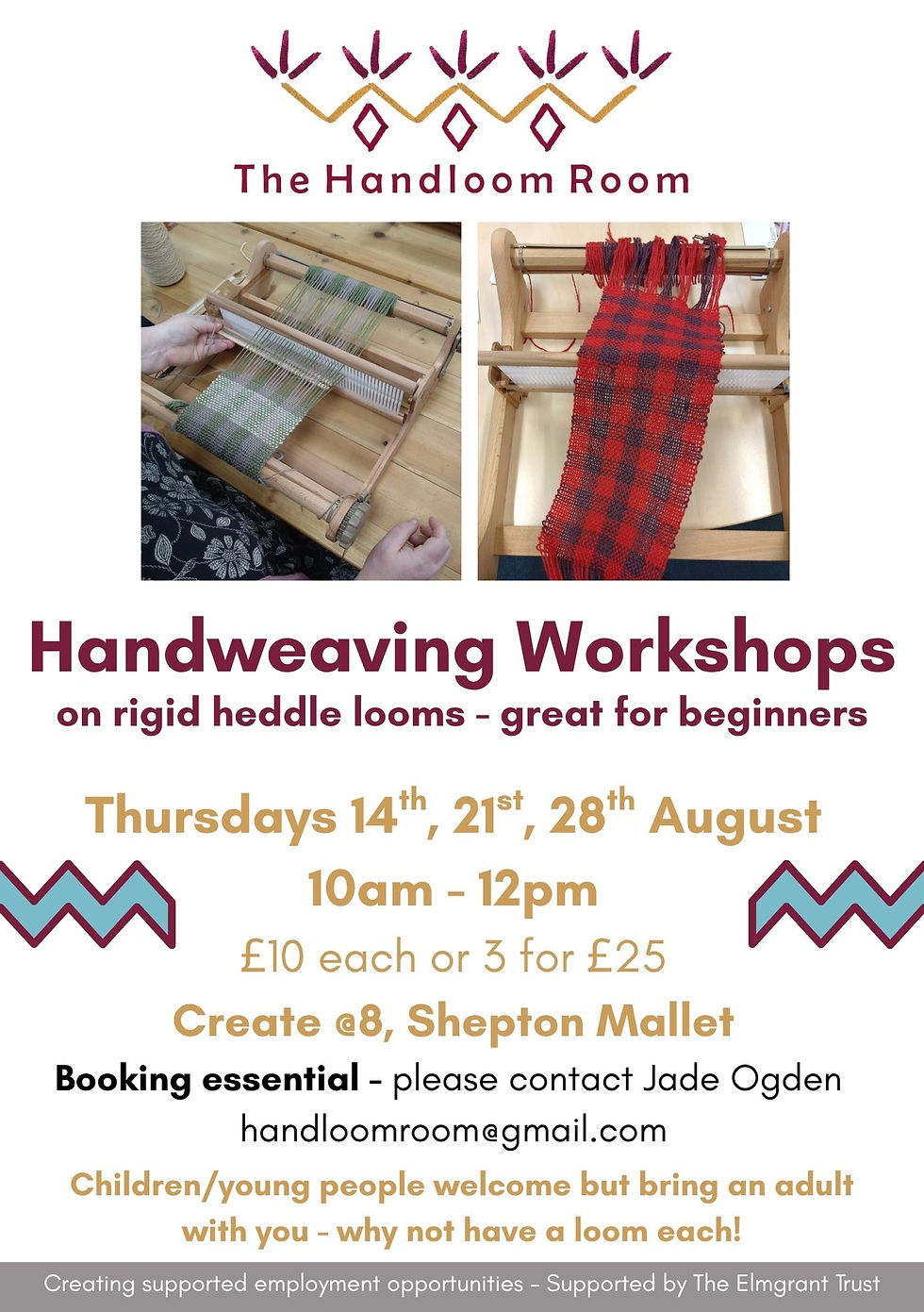Gee's Bend Quilting Visit
- The Handloom Room
- Aug 15, 2024
- 3 min read

Since reading about the quilts of Gee's Bend in a Selvedge issue years ago, I'd held the Alabama river basin area in my mind with intrigue ever since. This July, we were making a visit to Tennessee to stay with family and it seemed like the perfect opportunity to head south to Boykin (the current name for 'Gee's Bend') to finally discover the area for myself.
Following an overnight stay at a motel in Clanton with a peach coloured door, in a town selling peaches, we set off early to make the most of the hot day. A brief stop in Selma to stock up on fried catfish sandwiches (warm, bouncy and tingly with hot sauce) seemed essential too. The long road down to Boykin was dotted with homes, that thinned out the further south into the basin we drove. We were flanked by verdant scenery, alive with birdsong and insects as the thermometer surged into the mid 30's.
As with most places in America (in my limited experience!) the village was much more spread out than I'd imagined. We drove around looking for the Nutrition Center where women meet to quilt together and eventually found it closed (if you are thinking of visiting the area and would like to visit the Nutrition Center it is best to call ahead). Not letting this dampen our spirits, we found the Welcome Center instead which held a lot of information about the complex history of the quilters of Gee's Bend.
The Nutrition Center Arriving at Boykin The Welcome Center
Today's quilters are direct descendants of the enslaved people who worked the cotton plantation of Joseph Gee in the 1800's. After the Civil War, their ancestors remained on the land but worked as 'sharecroppers' which meant they effectively continued to be enslaved, via farming to pay their rent, and their rights were constantly infringed in both overt and more insidious ways. In the 1930's the price of cotton dropped drastically and the community faced ruin, until a government initiative purchased the land and then created loans to enable residents to acquire their homes and land that had been worked by their ancestors - 'cultural traditions like quiltmaking were nourished by these continuities.' [The Gee's Bend Heritage Trail.]
The women would make quilts to keep themselves and their families warm in their wooden homes, using old clothes and any scrap fabrics they could find. Many of these older quilts are now on display in art galleries around the world; their intense aesthetic appeal duly celebrated - comparisons have been made with Paul Klee and Henri Matisse. At Boykin, there is a selection of large boards dotted around the village which showcase images of the beautiful, historic quilted treasures, including small biographies of the women who made them. The 10 pieces on display are those that were made into postage stamps in 2006, which marked the significant contribution that the women made to American culture through their quilting.
On the display boards, I noticed that a lot of the women spoke about how they started quilting as a young person, and many of them didn't want to, but were encouraged by a grandmother or mother. The woman working at the Welcome Center echoed this today - she told us that there are not many young people interested, but that her youngest 'grandbaby' is starting to learn under her guidance. Perhaps in this case, history can repeat itself and the exquisite craft can continue to evolve in this area.
Departing the village, we headed to the Freedom Quilting Bee Center, which is back up the road heading north. Here there was an interesting video, lots more information and also some modern Gee's Bend quilts for sale. It was interesting to see the use of ultra-modern fabrics - some even featuring emojis!
Across the road from there we also visited a little store called 'On My Way to Gee's Bend - Alberta Market Place' and met the owner, Evangeline Square Williams. She was very welcoming and gave us a tour of all the pieces in her store and talked about which local women had made them. She had a long ancestry of quilt-makers and carries on the tradition herself - her daughter was sat stitching items for the shop too. They also endeavour to repair and sometimes finish unfinished old quilts - revitalising heritage pieces and making them functional once again.
You can enjoy an extensive gallery of the work here.
A quilt displayed at the Freedom Quilting Bee The Alberta Market Place



















Comments